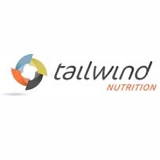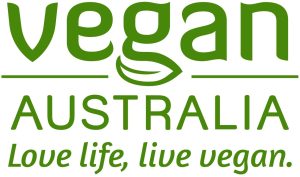Flexible Dieting
Its good to learn something new and sometimes whom you learn from can be surprising. Last week I attended a Flexible Dieting seminar presented by Danny Kennedy of DK Fitness.
I have for a while now trained at the same gym as Danny and without pointing out the obvious, it was his muscles that first got him noticed. Over time getting to know each other mainly through social media and the odd conversation this is when I really started to get to know Danny outside of his impressive physic – after all he is a physique athlete.
Danny is a certified personal trainer/strength and conditioning coach as well as a macro/nutrition coach. His passion, drive and determination to have and promote a fit, strong and healthy body is admirable as it is infectious.
As a plant-based athlete Danny’s Instagram posts are not only about finding your passion and working hard they are also about his meals that consist of steak, chicken, eggs even kangaroo! I wondered what he could teach me about food and nutrition. Posts about eating 2 whole eggs, 4 egg whites, 1 bagel with 20g peanut butter and nutella and think, wow our diets are at the other end of the spectrum to each other but strangely all the while fascinated by his plate.
Danny’s seminar on flexible dieting had me intrigued further by this lifestyle diet concept having first been introduced to this way of eating through my current personal trainer Adam Martin. Adam planted the seed and I was now eager to learn more and see if this way of eating could be followed on a vegan diet.
The basis of a flexible diet
Flexible dieting also known as IIFYM (If It Fits Your Macros)
It is not a ‘diet’ it’s a sustainable way of eating to help you produce consistent results that will be sustained for the rest of your life.
Track you macronutrients
It involves tracking your daily protein, carbohydrates and fat intake along with fibre in order to meet and reach your calorie goals.
Macronutrient goals
Depending on your goals you eat macronutrients to total your calorie intake leaving you in either a deficit, maintenance level or surplus.
Choose your food
You pick and choose (or rotate) your food sources without feeling guilty or going off track with your meal plan. You continue to eat the foods you enjoy as long as they fit within the macronutrient/calorie daily plan. There are no restrictions.
Fruit and Fibre is still important
Your fruit and fibre intake is taken into account and it is recommended that you consume 14g of fibre and 1 piece of fruit for every 1000 calories consumed.
There is no ‘good’ and ‘bad’
Traditional dieting generally labels food good and bad giving you a negative outlook on food and increasing the feeling of guilt when you eat off plan not to mention possible eating disorders.
You have TOTAL control over what you eat
Flexible dieting gives you a calorie and macronutrient target and you choose when and how you reach these targets throughout the course of a day.
How to calculate your calorie and macronutrient intake
Calories
Maintenance – amount needed to maintain your current body weight
Deficit – amount needed to reduce body fat
Surplus – amount needed to increase lean muscle mass
To work out your daily calorie intake use the below calculation:
Bodyweight x (times)
28.5= Sedentary job and do little to no exercise
31= Moderately active job and train 2-3 times per week
33= Active job and train 2-3 times per week, or sedentary job and train at a high intensity 4-6 times per week.
35= Active job and train at a high intensity 5-6 times per week
37.5= Athlete or active job training at a mod-high intensity every day or twice daily
Example – 54kg x 33 = 1782 calories for maintenance
How to calculate your macronutrient breakdown
Protein: Bodyweight x 2-2.5g
Fats: Bodyweight x 0.75-1.2g
Carbohydrates: Fill the remaining calories after calculating protein and fats
Based on my numbers above
Protein: 54 x 2 (lower protein intake) = 108g
Fats: 54 x 1.2 = 64.8g
Carbohydrates = TBC
Protein 108 x 4 (calories per gram) = 432 and Fat 64.8 x 9 (calories per gram) = 583.2. Total calories from protein and fat = 1015.2
Minus the protein and fat calorie number from the total maintenance number which is 1782 – 1015.2 = 766.8
Now to work carbohydrates figure, divide 766.8 by 4 (calories per gram)= 191.7
My numbers
Protein: 108g
Fats: 64.8g
Carbohydrates: 191.7g
Need more help
Visit www.dannykennedyfitness.com/flexible-dieting-ultimate-guide for a more detailed explanation of how to work out YOUR numbers.
Is it time consuming?
In short, yes well at the start anyway and then once you find your groove and the habits become normal then this way of life is just what you do, it becomes sustainable as opposed to a hindrance. You will become intuitive with your measurements and be able to measure your food without the need of scales but first; you need to put in the hard yards because like anything, nothing good comes easy. And even better, you can be vegan and follow a flexible diet.











Leave a Reply